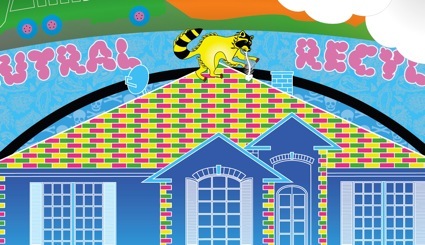TRASH
2008
Installation
46.8in h x 23.3in w x 29.8in d; 10 ft x 10 ft
Minneapolis, USA
Walker Art Center
with C-Lab
It is said that a good way to understand a society is by studying its trash. The thought goes that in trash one can find exemplary evidence of the way a society lives: the things it consumes, the manner it consumes, and the means by which it consumes – an essential cross-section of everyday life. But we think there is as much to be said for the form used for trash as for the contents of trash.
The common suburban trash can says a lot about culture in the suburbs. Its size is telling of the quantity of trash that is disposed. The inclusion of well-designed wheels is a response to the context. They accommodate the relatively long distances the trash can travels from backyard to curbside in the world of low-density single-family residential communities. The material reflects the priority given to durability over sustainability, as the hard plastic takes decades to biodegrade. The profile of its sides is optimized for large-scale waste management infrastructure. It can be quickly lifted and emptied by automated arms, speeding up the collection process and thereby enabling garbage trucks to collect faster over a greater territory.
In this project, the trash can has been redesigned, and mostly over-designed, to celebrate the taste of suburban culture and to give a form to the can that describes the processes of use, disposal, and management of the things we trash. Trash draws connections between the infrastructures of consumption, waste, and land management in suburbia.
The piece consists of three trash cans that have received graphical treatments in the style of ‘import scene’ cars, accompanied by a large wall graphic in the form of a mandala, a design adapted from Buddhist painting traditions, showing virtues and obstructions on the way to trash nirvana.
Trash was first displayed at the Walker Art Center as part of the exhibition Worlds Away: New Suburban Landscapes.






